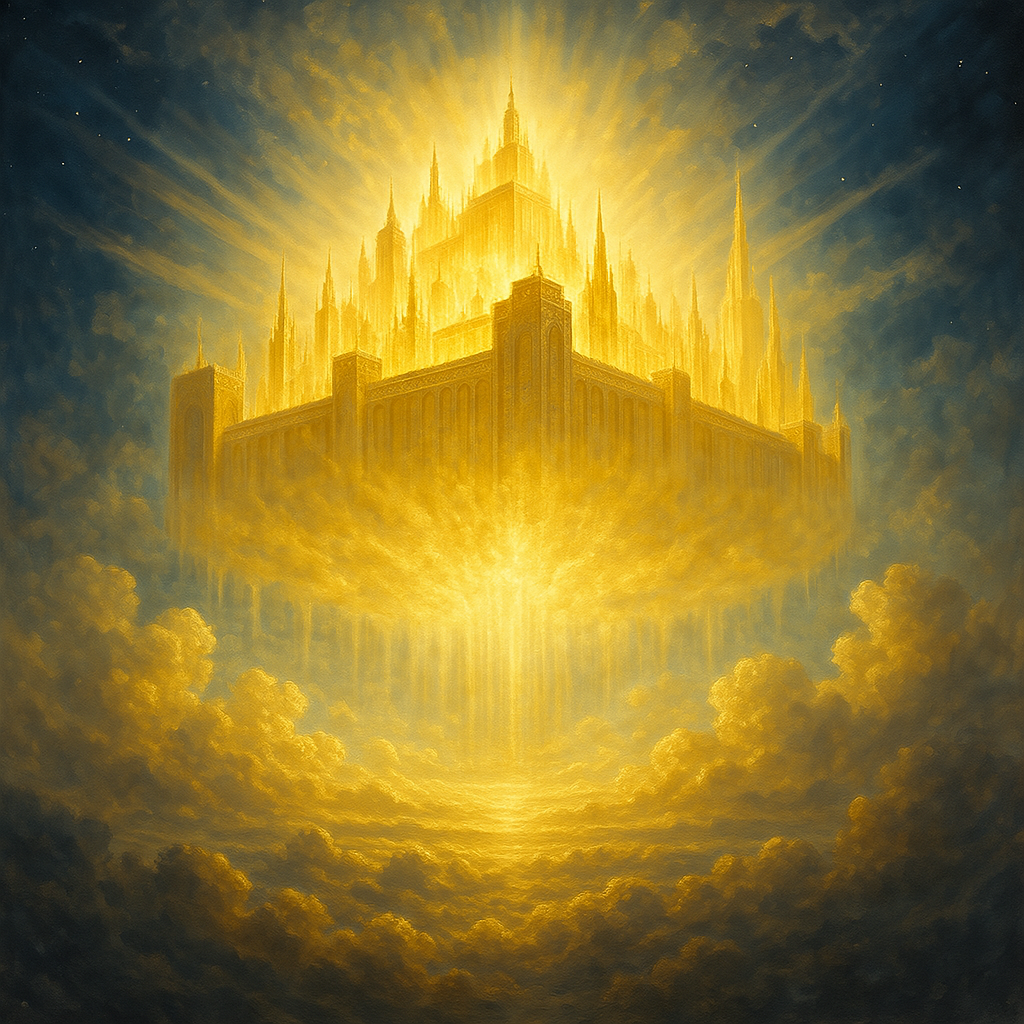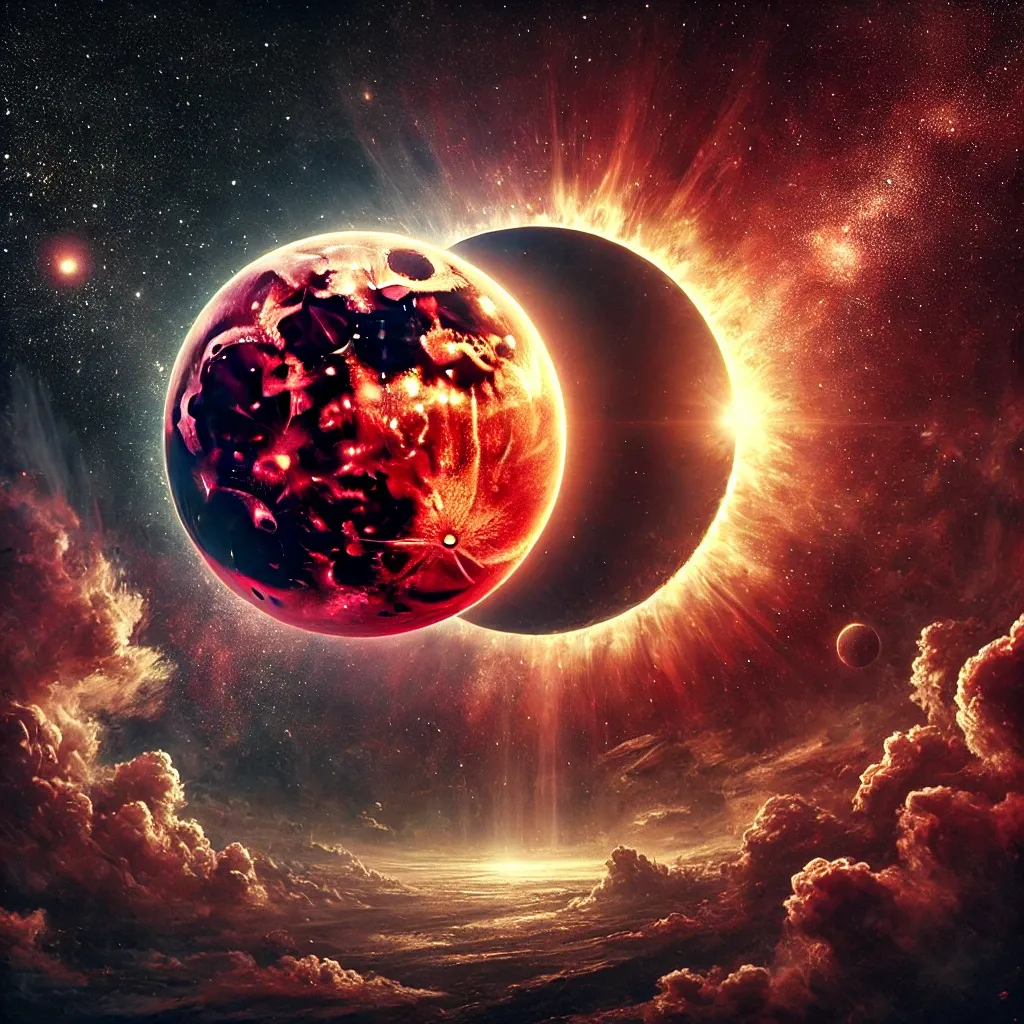Abba--Father!

A Revelation of the Father: How the Son Glorifies the Father in the Fulfillment of All Things.
But, as it is written, “What no eye has seen, nor ear heard, nor the heart of man imagined, what God has prepared for those who love him”
1 Corinthians 2:9
1. The Forgotten Center: The Father Revealed in the Apocalypse
Too often the Book of Revelation is read as a tale of divine vengeance, the rise of the Beast, or the glorification of Christ alone. But at the center of this apocalyptic scroll is the Father Himself. It is His hand that holds the sealed scroll (Revelation 5:1). It is His throne that forms the axis of all worship, judgment, and glory (Revelation 4:2). It is His will that unfolds through seals, trumpets, and bowls. Revelation is not merely the unveiling of Jesus Christ—it is the ultimate revealing of the Father through the Son.
The Son does not operate independently. He is the radiant outflow of the Father's heart (Hebrews 1:3), the perfect image of the invisible God (Colossians 1:15), the obedient Servant who says, "Not My will, but Yours be done" (Luke 22:42). Thus, the Revelation of Jesus Christ is in truth the Revelation of the Father’s glory, justice, and mercy embodied and executed through the Son.
2. The Scroll in the Father's Hand: The Architecture of Redemption
The sealed scroll in the Father’s right hand represents the totality of redemptive history—a plan hidden, guarded, and sovereignly held until the appointed time. It is the Father who authors history, and the scroll contains the fulfillment of His decrees from Genesis to New Creation.
When the Lamb takes the scroll, it is not a usurpation of power but a transfer of trust. The Father gives the Son authority to execute what He Himself has designed. The Son does not glorify Himself; He glorifies the Father by fulfilling every line of the scroll with holy precision and loving obedience (John 17:4).
This moment in Revelation 5 is the epicenter of eschatology: the Father entrusts the Kingdom to the Son, and the Son glorifies the Father by executing it perfectly.
3. The Seals, the Cross, and the Father's Heart
Each seal broken by the Lamb is an echo of the Cross—the place where the Son first fully revealed the nature of the Father. The Cross was not the wrath of an angry deity poured out on an innocent Son; it was the outpouring of the Father's love through the Son's obedience (Romans 5:8). The same is true in Revelation: each judgment is not arbitrary wrath but the outworking of the Father's justice through the Lamb's authority.
The tribulation does not reveal a different God than the Gospels. It is the same Father, patient and righteous, now confronting rebellion with clarity. In so doing, He preserves His holiness, vindicates His saints, and prepares the world for the age to come. Through it all, the Son is the perfect instrument of the Father’s heart.
4. The Wedding and the Father’s Desire for a Family
The marriage of the Lamb is not the triumph of a romantic ideal but the fulfillment of the Father's longing to dwell with His children (Revelation 21:3). The Father seeks worshipers, sons and daughters, a Bride for His Son, and a family for Himself (John 4:23; Romans 8:29). From Eden to New Jerusalem, His purpose has always been fellowship.
The Son glorifies the Father by purifying the Bride with His blood and presenting her without blemish. This is not only the Son's inheritance—it is the Father’s joy (Hebrews 12:2). The Bride is both the reward of the Son and the household of the Father. In this divine marriage, the Son fulfills the Father’s eternal purpose: love, union, and communion with a holy people.
5. The Return of the Son and the Vindication of the Father's Name
When the heavens are opened and the Son rides forth on a white horse (Revelation 19:11), it is not merely an act of judgment—it is the vindication of the Father's name. The kingdoms of this world have blasphemed the Most High, exalted idols, and trampled His truth. The Son returns not to glorify Himself, but to sanctify the name of the Father (Ezekiel 36:23). Every eye shall see Him, and in seeing Him, the world will behold the image of the Father they rejected.
The Son does not act as a rival sovereign but as the Father's Viceroy. Every crown He wears, every enemy He conquers, and every word He speaks is in the name of the Father. Thus, the glory of the Son is the glory of the Father made visible.
6. The Kingdom Delivered: The Son's Final Act of Glory
At the end of all things, when death is destroyed and the last enemy subdued, the Son does something astonishing: He delivers the Kingdom back to the Father (1 Corinthians 15:24-28). This is not abdication, but consummation. The Son, having executed the Father's will perfectly, returns the Kingdom so that "God may be all in all."
In this act, the Son fulfills the deepest mystery of the Godhead: the Father as the eternal source, the Son as the eternal expression, and the Spirit as the eternal bond. The triune glory reaches its fullness when the Son, crowned with many crowns, lays them at the feet of the One who sent Him.
This is the end for which all things were made: the Father, dwelling with His children, glorified through the Son, in a Kingdom where righteousness reigns forever.
- The Ever-Present Majesty of the Father: Lord of Eternity, Witness of All Moments
If the Son is the image, the Word, and the radiance of God, then the Father is the infinite ocean from which that radiance flows eternally. He is not only the initiator of all things, but the ever-present sustainer and sovereign observer of all things—never absent, never surprised, never unaware. He is not bound by time, for time itself is a servant to His purpose.
“Before the mountains were brought forth, or ever You had formed the earth and the world, even from everlasting to everlasting, You are God.”
— Psalm 90:2
God the Father does not merely remember the cross—He sees it eternally. He does not merely recall the resurrection—He beholds it, now. He does not wait to see the final victory—He stands over it, already enthroned. The Father is not only omniscient and omnipotent—He is omni-temporal.
In His eternal "now", the Father:
- Sees Christ slain as the Lamb from the foundation of the world (Revelation 13:8)
- Witnesses the Spirit’s descent at Pentecost, perpetually breathing life into the Church
- Beholds the glorified Son seated at His right hand, ever interceding for us
- Rejoices over His creation, even as He mourns over its fall, and rejoices again over its renewal
- Hears the final trumpet, even as He gives breath to the first Adam
- Receives worship from angels, even as He patiently calls prodigals to return
This is the infinite majesty of the Father: He dwells above all things, within all things, and outside of all things at once. He is always bearing witness—never absent, never delayed, never inattentive.
“He is not the God of the dead, but of the living, for all live to Him.”
— Luke 20:38
To the Father, everything is alive. Abraham lives. David lives. You live. Not because we have conquered death in ourselves, but because the Father is life itself—and He beholds every moment in the fullness of its reality. He watches the Red Sea part even now. He sees His Son die and rise and return—all at once. His gaze is never lost.
The Son Glorifies the Father by Revealing This Timeless Majesty
The Son, in coming into time, declared what the Father always is—“He who has seen Me has seen the Father” (John 14:9). When the Word became flesh, the infinite majesty of the Father stepped into finitude to be seen, touched, and known.
- In creation, the Son manifested the will of the Father
- In incarnation, He revealed the heart of the Father
- In obedience, He fulfilled the command of the Father
- In suffering, He demonstrated the justice and mercy of the Father
- In resurrection, He unveiled the life-giving power of the Father
- In ascension, He vindicated the throne of the Father
- In return, He will glorify the Father before every creature
“Father, glorify Your name.”
Then a voice came from heaven, saying, “I have both glorified it and will glorify it again.”
— John 12:28
The Son’s every act is an unveiling of the Father’s eternal glory. Every parable, every miracle, every tear, every drop of blood is the Father’s nature made manifest.
And in the end, even the Son—highly exalted, worshiped by all—gives the Kingdom back to the Father, that the Godhead may be all in all.
“Then the Son Himself will also be subject to Him who put all things under Him, that God may be all in all.”
— 1 Corinthians 15:28
The Father Is the Source and Summit of All Glory
The Alpha of creation.
The Witness of Calvary.
The Receiver of the Bride.
The One who declares the End from the Beginning.
The Architect of the heavens.
The Singer of the Song of Moses and the Lamb.
The One who speaks from the burning bush, from Sinai, from the tabernacle, from the throne.
He is never not present.
Wherever the Son moves in history, the Father surrounds it all—before, during, after, above, and within. The Son glorifies the Father not only by obedience, but by drawing creation into the very heart of the Father’s eternal will.
“This is eternal life, that they may know You, the only true God, and Jesus Christ whom You have sent.”
— John 17:3
The Father is the Glory from Whom and to Whom All Things Flow
Even in the New Jerusalem—resplendent with the glory of the Lamb—it is the glory of God that illuminates it (Revelation 21:23). The Son is its lamp, but the Father is its light. And when every knee bows, and every tongue confesses Jesus Christ as Lord, it is:
“To the glory of God the Father.”
— Philippians 2:11
This is the majesty of the Father: the unchanging source of all being, the eternal observer of all history, and the ever-present love into which the Son draws all the redeemed. When you worship Christ, you glorify the Father. When you trust Christ, you honor the Father. When you behold Christ, you see the Father.
He is the final destination.
He is the eternal witness.
He is the ever-present I AM.
Conclusion: The Father as the Eternal Fire on the Throne
The Book of Revelation, rightly understood, is the most profound unveiling of the Father ever given to man. Though veiled in symbols and judgments, its heart burns with paternal desire. The Father is not passive in the background. He is the Fiery Flame ever on the throne, the Ancient of Days, the Author of the scroll, the Sender of the Lamb, the Giver of the Spirit, and the Builder of the New Jerusalem.
And the Son, in all His beauty, glory, and majesty, is the perfect image and glory of the Father. To glorify the Son is to glorify the Father. To love the Son is to love the Father. And to behold the Son returning in glory is to finally behold the Father whose will has been done on earth as it is in heaven. To behold the Bride descending down to earth--is to understand the full revelation of God. That God has filled humanity with the fullness of himself through the Holy Spirit; merging the image bearer with the fullness of he who is the fullness of all in all--so that together with her bridegroom, and her Father; through the Holy Spirit, constitute one divine family. Always and forever more.
To Him be glory, forever and ever. Amen.


Comments ()